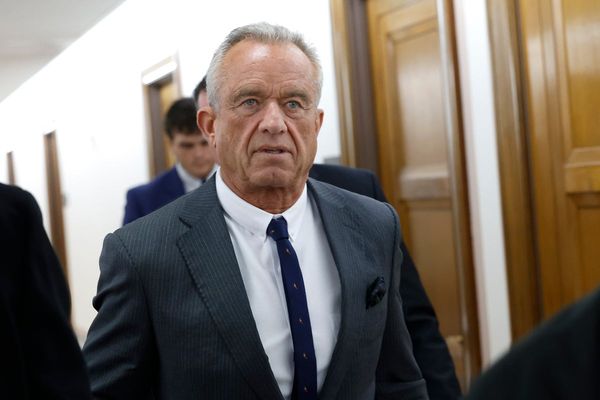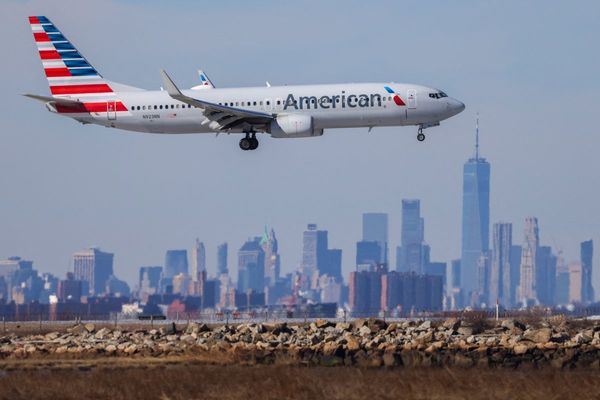
A friend sent me a video of some Carnaby’s cockatoos in her backyard the other day. A family of five were feasting on the golden orbs of a native banksia, squawking and cackling among themselves, the tree bowing under their weight.
As they finished their banquet and leapt for the skies, letting out their woozy, fluting call, I felt a heat rising in my chest and my eyes welling with tears. It was a feeling somewhere between nostalgia and love. Their yearning sing-song, I realised, was the soundscape of my childhood.
They were sentinels of the after-school pick up, watching guard from the pine trees and carpeting the driveway in seeds. On weekends my sister and I would trundle up to Greenmount national park, where they’d nestle contentedly in the marri trees, and on holidays in Yanchep we’d enjoy the occasional thrill of a raucous flock streaming overhead.
It’s been a long time since I’ve seen Carnaby’s cockatoos in the wild, which I assumed was owing to my urban, itinerant lifestyle. But as it turns out there’s much more to it.
“They used to blacken the sky,” says Prof Kris Warren, a specialist in Western Australia’s endangered black cockatoos. “Only 50 years ago, when I was growing up, you’d see flocks of up to 7,000 in Perth. Now, you’d be lucky to see 100.”
Endemic to Western Australia’s south-west, the Carnaby’s cockatoo (Ngoolark in Noongar language) is somewhat of an icon. Across Perth, colourful murals illustrate their cheeky personalities and bird watching groups go berserk over sightings. But our the love for the bird is at odds with its rapid decline.
The Carnaby population is estimated to have decreased by between 50% and 80% over the past 45 years and continues to decline 4% each year. The main culprit is land-clearing and deforestation, which has seen more than 90% of their main foraging, breeding and roosting habitat disappear since European settlement.
It is a death by a thousand cuts for these magnificent creatures, which face a gamut of other threats including motor vehicle collisions, increased competition for nesting hollows and disease. Plus much of the remaining population is beyond breeding age.
Meanwhile, experts say the state government’s plans to continue logging the Gnangara pine plantations – the bird’s most significant foraging and roosting habitat in the Perth-Peel region – could spell catastrophe for the species.
“Many people don’t realise how dire this situation is,” says Kingsley Dixon, a botanist and the former science director of Kings Park.
“Perth is a utopia through the eyes of humans, but we are the extinction centre of the planet. We’ve wiped out 70% of the landscape in the south-west, and there’s a continued carelessness still going on today.”

The Ngoolark (Carnaby) also has great cultural significance to Noongar people and they take on multiple meanings, including rain carriers, spiritual messengers and family totems. Murdoch University found that the decline of the species is causing great distress for some Noongar communities.
The Baudin’s black cockatoo, which looks very similar to the Carnaby, is now critically endangered, with a population decrease of 90% over the past three generations.
Warren says the only way we can reverse Perth’s cockatoo population decline is to “shift from net habitat loss to net habitat gain”. While this needs to happen at a government and industry level, individuals can help by planting native trees like banksia, hakea and eucalyptus species.
“The Carnaby has been here for 10 to 20 million years,” Dixon says. “They’re survivors and they are so special to this place.
“If we can’t save the Carnaby, we can’t save anything,” he continues. “We have so much data about these birds, we know what we need to do. I just don’t want the last song of the Carnaby. None of us want that.”
Looking up to the sky today, where the Carnaby once flocked in their thousands, I feel the weight of what has been lost and the urgency to save them.
Like so many people across the south-west, I adore these birds. Their exquisite bodice of black and white scalloped plumage. Their gentle, knowing eyes and gleeful expression. The way the mums and dads couple for life and creche their young in a “nursery tree”, hidden high up among dense foliage.
I can’t help but think of a quote by the Irish writer Robert Wilson Lynd: “In order to see birds it is necessary to become a part of the silence.”
We cannot possibly turn the fate of the Carnaby without stepping into their world, observing the whirl and pulse of their skyward journeys and embracing our innate reciprocity with the earth’s ecosystem. Perhaps if we listen for long enough we might understand their clarion call: this is our home.
You can vote in the bird of the year poll until Thursday 5 October







